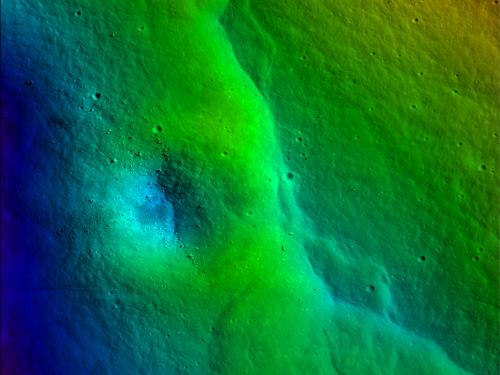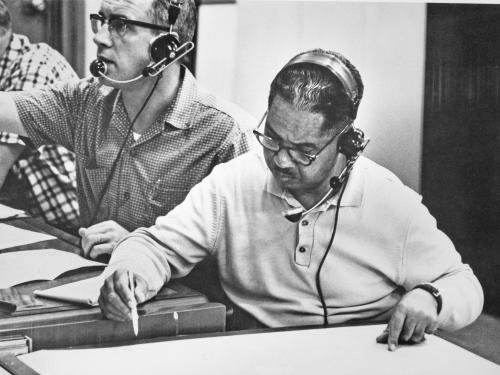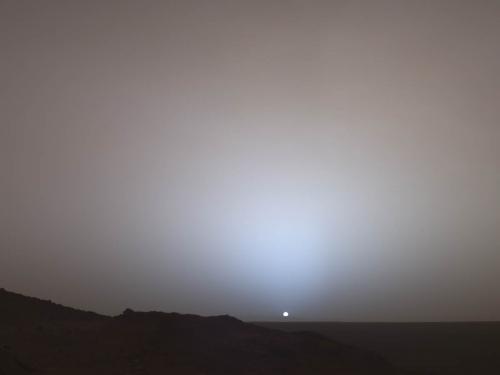

Stories of daring, stories of technological feats, stories of prevailing against the odds ... these are the stories we tell at the National Air and Space Museum. Dive in to the stories below to discover, learn, and be inspired.
Showing 81 - 90 of 111

September 18, 2015
Planetary science is one of those fields of research where you can always count on being surprised. The remarkable terrain of Pluto and Charon in images being sent back by the New Horizons spacecraft certainly qualifies. One of my all-time big surprises is from a recent discovery on an object much closer to home—the Moon.

August 21, 2015
On July 14, the New Horizons spacecraft completed a 9.5-year-long, 4.8-billion kilometer (3-billion mile) journey to the object furthest from the Sun to be visited by a spacecraft.

July 02, 2015
Much of the Moon is blanketed by a thick layer of dust, built up from the rocky surface over billions of years by the impacts of small meteorites. Hidden beneath the dust is evidence of ancient geologic activity – great volcanic eruptions, tectonic shifts in the crust, and vast deposits of once-molten material hurled outward during the formation of the giant impact basins.

March 14, 2015
Purdue University, located in West Lafayette, Indiana, has a special place in the annals of space exploration, having among its graduates 23 (and counting) astronauts, including Gus Grissom, Neil Armstrong, and a host of shuttle crew members, who have flown on more than 40 shuttle missions.

February 27, 2015
Dr. Vance Marchbanks, Jr. is famous in both the Black history and aerospace history communities for his accomplishments as one of the first in his field. He was one of two Black MDs to complete the United States Army Air Corps School in Aerospace Medicine at the beginning of World War II. His fame continued through his association with the 99th and 301st Fighter Groups, who later became known as the Tuskegee Airmen.

December 08, 2014
Venus has almost the same diameter as the Earth and is the next closest planet to the Sun. The similarity ends with the weather report, however. The surface temperature is more than 465 o C (870o F) and atmospheric pressure is 90 times that of Earth. The surface is hidden from view by a dense blanket of clouds, so we must use radar systems to “see” the landscape below.

June 25, 2014
Able and a squirrel monkey named Baker were the first American animals to enter space and return safely. On May 28, 1959 at Cape Canaveral, Able was placed in the nose cone of Jupiter AM-18 secured by a contour cradle made of fiberglass with sponge rubber lining specifically built for her body. Included in the cradle were multiple electrodes used to collect information on Able’s reaction to noise, acceleration, deceleration, vibration, rotation, and weightlessness. The cradle was then placed in a capsule with a life support system that included oxygen, moisture and CO2 absorbers, and electrical heating and cooling systems to keep the monkey alive. Baker was placed her in own separate capsule in the nose cone.

April 21, 2014
When Space X launched the Dragon Spacecraft on Friday, April 18, it was carrying nearly 5,000 pounds of supplies and payloads, including critical materials to support more than 150 science investigations planned for International Space Station (ISS) Expeditions 39 and 40. Among these materials are some that weigh hardly anything at all—microbes—of which one type was collected right here at the National Air and Space Museum in Washington, DC.

January 07, 2014
For the last ten years the missions of the Mars Exploration Rovers, Spirit and Opportunity, have brought breathtaking images of Mars back to Earth.

August 20, 2013
The Viking program represents a major effort by the United States to explore Mars, with the particular goal of performing experiments on Martian soil to look for possible evidence of life. Four individual spacecraft were sent to Mars as part of the Viking project, two orbiters and two landers, launched as identical orbiter/lander pairs.